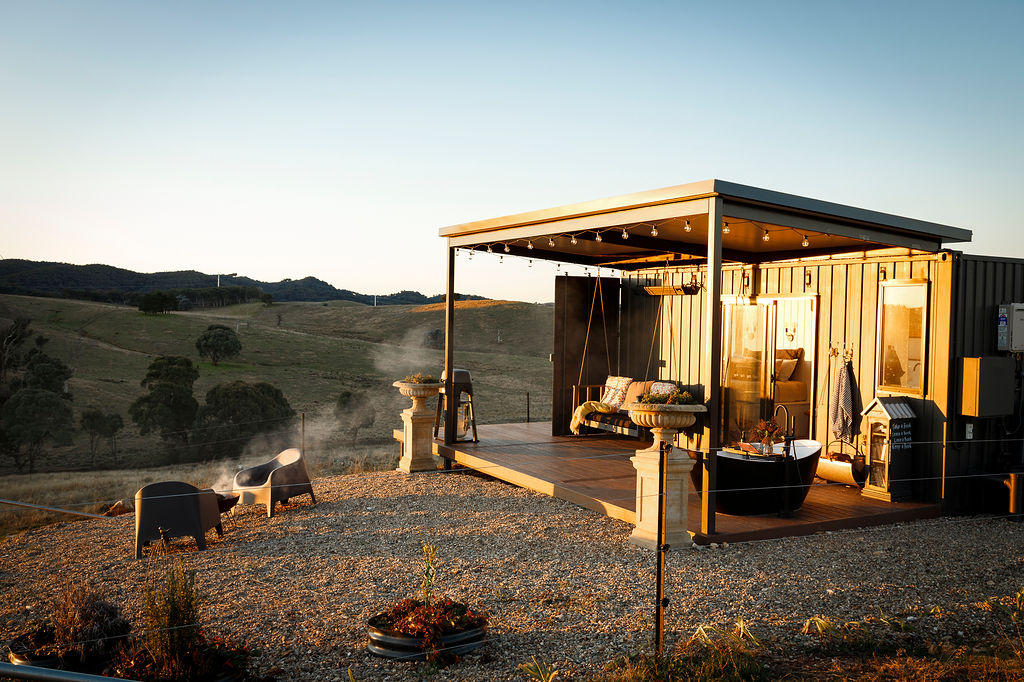Sign up to our mailing list for the best stories delivered to your inbox.
Harvest teams all run differently, but stopping for dinner is important to our family.
WORDS & PHOTOGRAPHY GRACE QUAST
Eight years later, my perspective has shifted. When I was hungry driving a tractor 50 kilometres from home or thirsty while out loading trucks, I realised how vital those unsung roles are: a happy harvest relies on maintaining functional domesticity.
Let me preface this by saying I’m no domestic goddess: my obituary won’t claim I was an excellent housewife, and I am okay with that. I do, however, take pride in the farm’s energy and how people on our farm feel.
Harvest is exciting, but it can also be a time when worries pile up. Last year it was flooded roads, wet paddocks, bogged tractors and diminished grain quality; in other years it’s been staff shortages, low commodity prices and paddock fires.
Each year when I embark on harvest season, I remember my nanna, Molly, and the way she wrapped everyone she met in warmth and comfort. When I was growing up, Molly would visit our farm for shearing, and bake and bake for weeks on end: jam drops, shortbread, roasts, quiches and cakes. Three times a day — at morning tea, lunch and smoko — we would walk a massive picnic basket over to the shearing shed together. We would perch on the wool bales with the shearers, roustabouts and working dogs. Enamel mugs were passed around, filled from the urn bubbling away next to the wooden wool press.
There was only one time Molly was truly cross with me. She had asked me to take the basket to the shed on my own: I don’t remember the reason for my disobedience, but instead of delivering the basket I enjoyed a tea party, devouring the smoko in the garden with my favourite Kelpie.
I now understand the look on Nanna’s face when she discovered me at the bottom of the garden, while there was a shed filled with hungry shearers not too far away.
These days my harvest meals are planned with military precision: time is scarce, and the closest grocery store is 75 kilometres and several terrible roads away. I’m not sure what my reaction would be if someone fed the dog my carefully crafted baking.
Molly made the exhausting process of shearing fun; you never knew what would be in the basket each day. She was indefatigable; she energised everyone around her.
That is how I try to approach paddock dinners at harvest. It is my favourite time of day, sitting in the back of utes parked together at sunset with a cold drink while we all tuck into green curry, risotto and roast dinners. Racing to devour ice creams before they melt down our hands in the harvest heat. The team shares anecdotes about their day, the crop, and, when I am lucky, personal stories of war, travel, simpler times and family.
Harvest teams all run differently, but stopping for dinner is important to our family. My approach is shaped by my childhood experiences with my nanna and 50 years of the tradition of my husband’s grandmother, Moya, delivering meals to the same paddocks I do now, at a time when they worked this land with much smaller machines, feeding and managing harvest teams triple the size.
This will be our first harvest with a baby, and I love knowing that our son will grow up experiencing those shared meals at the end of the day, meeting the wonderful characters who descend on our village once a year from every walk of life and corner of the globe. I am concerned about managing it, but I’ve been watching the women around me for almost a decade, and I have learned that where there is a well-managed list, there is a way.
From farming to fashion and back again with Grace Quast
When we think of harvest, we naturally think about the tractor drivers working long hours and not so much about the importance and sacrifices of the caregivers. The women with three children asleep in car seats delivering dinner at night, the in-laws cleaning cottages and doing school runs, the cooks too exhausted to feed themselves after washing up at midnight.
During busy times, whether it’s shearing, branding or harvest, exhaustion or energy becomes collective. It is always the strongest energy, positive or negative, that will win out. So it is the caregivers working behind the scenes who make it all work. Who turn up in the evenings with an optimism that says, “I know you are tired and you’ve had a big day; let me carry that for a while.”
I look around at the incredible women in our greater farming community balancing dry spells, challenging markets, floods, families and farms. They are keeping the wheels spinning, and I think to myself, the most important roles at harvest are theirs.
Grace and her husband David are grain farmers in northern NSW and recently welcomed their newest family member — son Hunter.
Subscribe to Graziher and never miss an issue of your favourite magazine! Already a subscriber? You can gift a subscription to someone special in your life.
To hear more extraordinary stories about women living in rural and regional Australia, listen to our podcast Life on the Land on Apple Podcasts, Spotify and all major podcast platforms.

The Barlow is the perfect spot to relax and unwind.

Take a look inside our special Wool Issue, featuring AgriFutures award winner Carol Mudford, plus an outback flower farmer, CWA cookery judge and a pure-wool wedding dress.